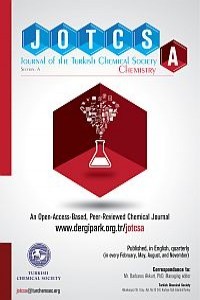Influence of Peptide Bioregulators on Indicators of Hemostasis in Blood of Irradiated Experimental Animals at Low Altitude Conditions
Influence of Peptide Bioregulators on Indicators of Hemostasis in Blood of Irradiated Experimental Animals at Low Altitude Conditions
___
- Rehfeld, J. F. and Bundgaard, J. R. (2010). Results and Problems in Cell Differentiation. Cellular Peptide Hormone Synthesis and Secretory Pathways. Berlin, Germany. Springer
- Favaloro, E. J., & Lippi, G. (Eds.). (n.d.). Hemostasis and Thrombosis: Methods and Protocols (2017th ed.). Humana; Softcover reprint of the original 1st ed. 2017 edition (August 12, 2018).
- Ivanov, V. T. (2010). Peptides as Universal Biological Regulators. In HERALD OF THE RUSSIAN ACADEMY OF SCIENCES (Vol. 80, Issue 5).
- Kennedy, A. R., Maity, A., & Sanzari, J. K. (2016). A Review of Radiation-Induced Coagulopathy and New Findings to Support Potential Prevention Strategies and Treatments. Radiation Research, 186(2), 121–140. https://doi.org/10.1667/RR14406.1
- Kurmanbekova, G., Beishenalieva, S., Rachkov, I., Chekirov, K., & Omurzakova, N. (2014). Advances in Environmental Biology Bioregulatory Basic Peptides Liberated from Gall-Bladder Inflammatory Wall of People Who are Sick with Acute Cholecystitis after Laparatomy Cholecystectomy. In AENSI Journals Adv. Environ. Biol (Vol. 8, Issue 10). http://www.aensiweb.com/aeb.html
- Rachkov, A. (1990). Trombogemorragicheksii sindrom pri ostroi krovopotere i luchevi bolezni v usloviyakh vysokogor’ya:Avtoref.diss. ...dokt.med.nauk, -M., 1990, -Р. 38.
- Rehfeld, J. F., & Bundgaard, J. R. (Eds.). (n.d.). Cellular Peptide Hormone Synthesis and Secretory Pathways. In Results and Problems in Cell Differentiation. Springer; 2010th edition (May 4, 2012).
- Shpakov, A. (2011). Peptides derived from the extracellular loop of receptors: structure, mechanisms of action and application in physiology and medicine. Ross Fiziol Zh Im I M Sechenova ., 97(5), 441–458.
- Stanton A.G. Biostatistics. Danilov A. translated from English; Buzikashvili NE, Smoilova DV. editor. McGraw-Hill, Inc – 1998. – 459 с.
- Treml, B., Wallner, B., Blank, C., Fries, D., & Schobersberger, W. (2022). The Influence of Environmental Hypoxia on Hemostasis—A Systematic Review. Frontiers in Cardiovascular Medicine, 9. https://doi.org/10.3389/fcvm.2022.813550
- Başlangıç: 2014
- Yayıncı: Türkiye Kimya Derneği
Leela Kumari BODASİNGİ, Shyamala PULİPAKA, Venkata Nagalakshmi KİLANA
Bahar MERYEMOĞLU, Burçak KAYA, Berna NİŞ
Aqueous Extract of Onion Peels as A Biowaste-Based Sensitizer for Photovoltaic Cells
Rısna Ernı Yatı ADU, Gebhardus Djugian GELYAMAN
Synthesis and Photodegradation of Bi2O3 and Pb-Bi2O3 Nanoparticles and Their Kinetic Study
Farzana HAİDER, Zakia GUL, Kafeel AHMAD KHAN
Oleic Acid-PVA Based Amphiphilic Polymer Micelles for Vitamin D Encapsulation
Monsuru DAUDA, Ayobami AJANİ, Tınuade Jolaade AFOLABI, Abass ALADE
Gülbübü KURMANBEKOVA, Salkyn BEİSHENALİEVA, Nurjamal OMURZAKOVA, Bermet KIDIRALIYEVA
Husseın MOHAMED, Zeinab HAMZA, Wael TAWFİK, Nada MOHAMMED, Hamada ABDEL-MAGEED, Nofal SOLİMAN, Amany EL-ZAİRY, Momtaz HEGAB
